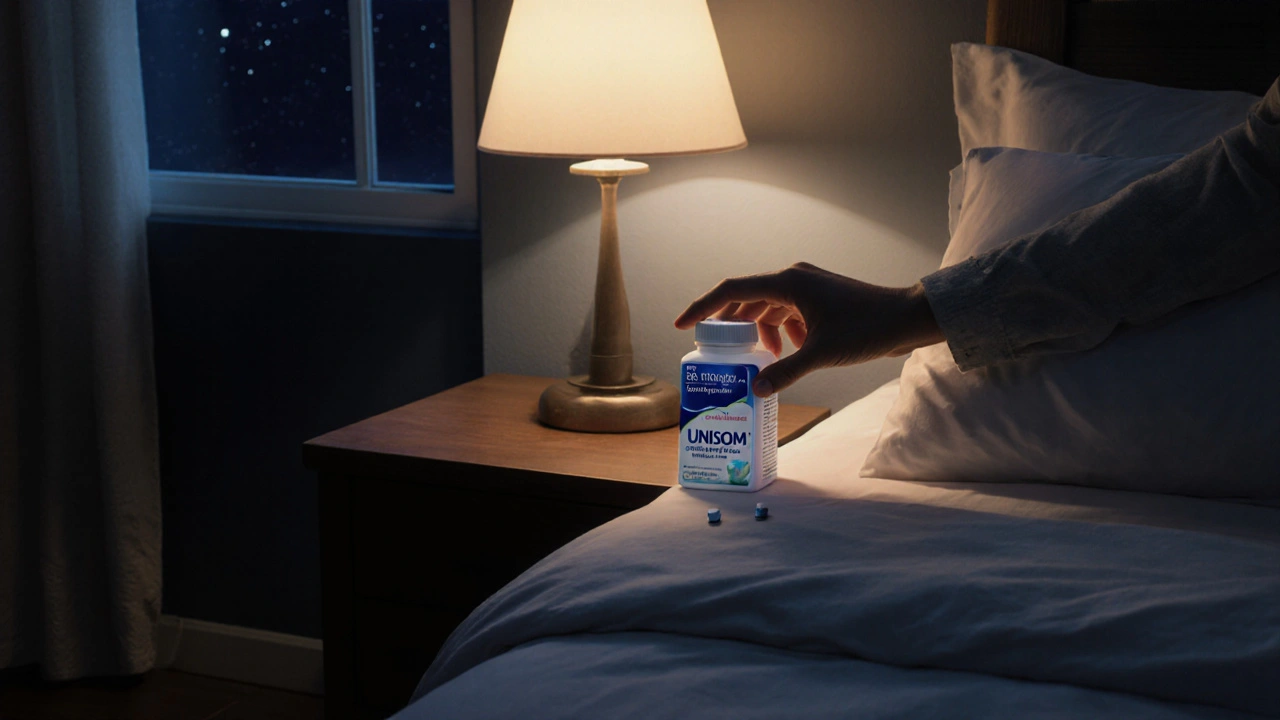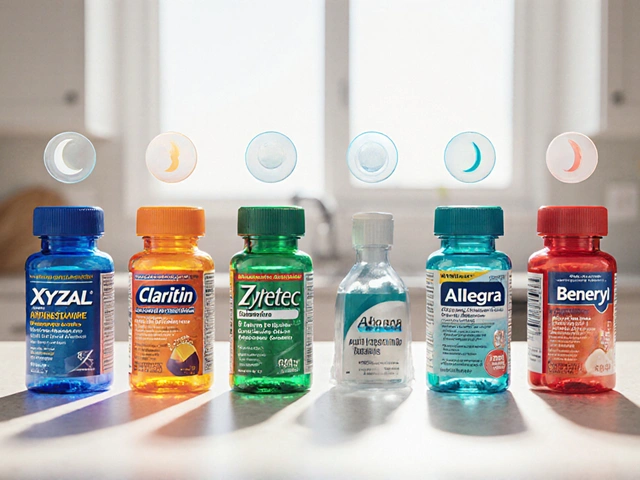Ajith Nivard Cabraal's Family Ties to Former PM Ranil Wickremesinghe Unveiled
March 22 2024Doxylamine Comparison – How It Stacks Up With Other Antihistamines
When looking at Doxylamine Comparison, a side‑by‑side analysis of doxylamine’s benefits, risks and proper use compared with alternative over‑the‑counter antihistamines. Also known as unani sleep aid, it helps you decide if the drug fits your night‑time or allergy needs. Antihistamine is the broader drug class that blocks histamine receptors, relieving sneezing, itching and watery eyes. Understanding the class basics is the first step before you dive into specific agents, because the chemistry that stops an allergy also determines how sleepy you might feel. In a doxylamine comparison, the key questions are: does it calm my symptoms? how strong is the drowsiness? and what dosage keeps me safe? Answering those questions requires a quick look at effectiveness, sedation level, and safety profile – the three pillars that any good drug comparison should cover.
Key Factors to Consider When Comparing Doxylamine
One major factor is how doxylamine acts as a Sedative, often marketed as a nighttime sleep aid. The sedative property comes from its strong antihistamine activity, which also means it can make you feel groggy the next morning. By contrast, Xyzal, whose generic name is levocetirizine, is designed to be non‑sedating – it blocks peripheral histamine receptors without crossing the blood‑brain barrier as much. This makes Xyzal a popular choice for daytime allergy relief where staying alert matters. Another common over‑the‑counter option is Meclizine, which sits somewhere between doxylamine and Xyzal. Meclizine provides moderate relief for motion sickness and vertigo and usually induces less sleepiness than doxylamine, but more than Xyzal. When you compare these three, think of three attributes: effectiveness against allergy symptoms, level of sedation, and recommended dosage range. Doxylamine typically works at 12.5‑25 mg per dose for adults, while Xyzal is effective at 5 mg once daily, and Meclizine at 25‑50 mg for motion sickness. Knowing these numbers lets you match the drug to your routine – whether you need a night‑time aid or a daytime blocker.
Beyond sedation, safety and side‑effects matter a lot. Doxylamine can cause dry mouth, blurred vision, or trouble urinating, especially in older adults. Xyzal’s most common complaints are mild headache or fatigue, but serious side‑effects are rare. Meclizine may cause stomach upset or a slight drop in blood pressure. When you read a doxylamine comparison guide, you’ll see that the dosage ceiling for doxylamine is lower for seniors, because the sedative hit can increase fall risk. For people with liver issues, dose adjustments are also recommended, whereas Xyzal is generally safer for those with mild liver impairment. By mapping these safety windows, you can pick the antihistamine that aligns with your health profile. Below you’ll find a curated set of articles that dive deeper into buying cheap generics, checking pharmacy credentials, and getting the most out of each medication. Use the insights here as a checklist before you head to the online pharmacy – the right comparison saves you time, money, and unwanted side‑effects.
 3 Oct
3 Oct
Unisom vs Other Sleep Aids: Which OTC Option Works Best?
A practical comparison of Unisom (diphenhydramine) with doxylamine, melatonin, valerian and prescription options, helping you choose the right OTC sleep aid.
Read More...




